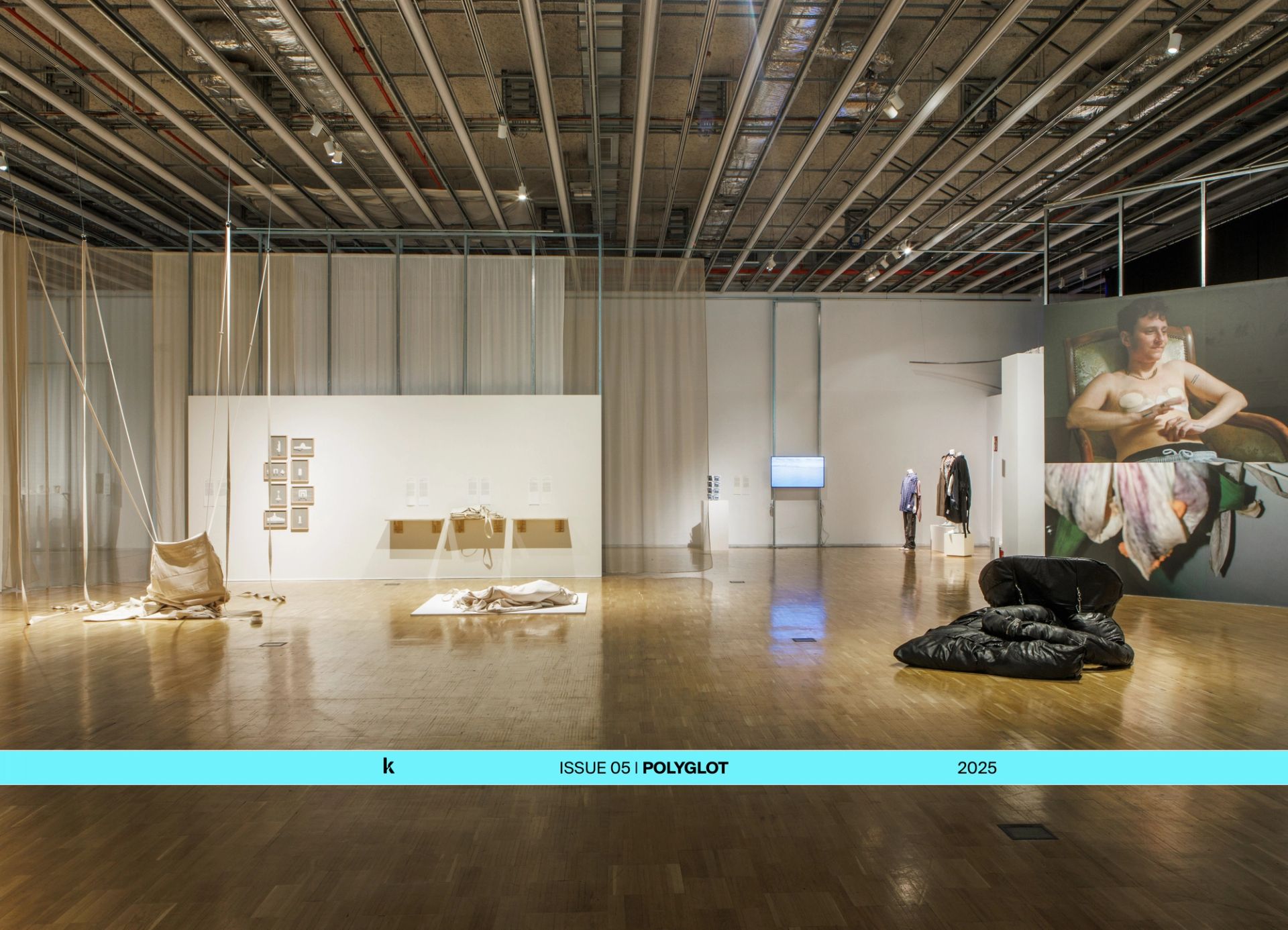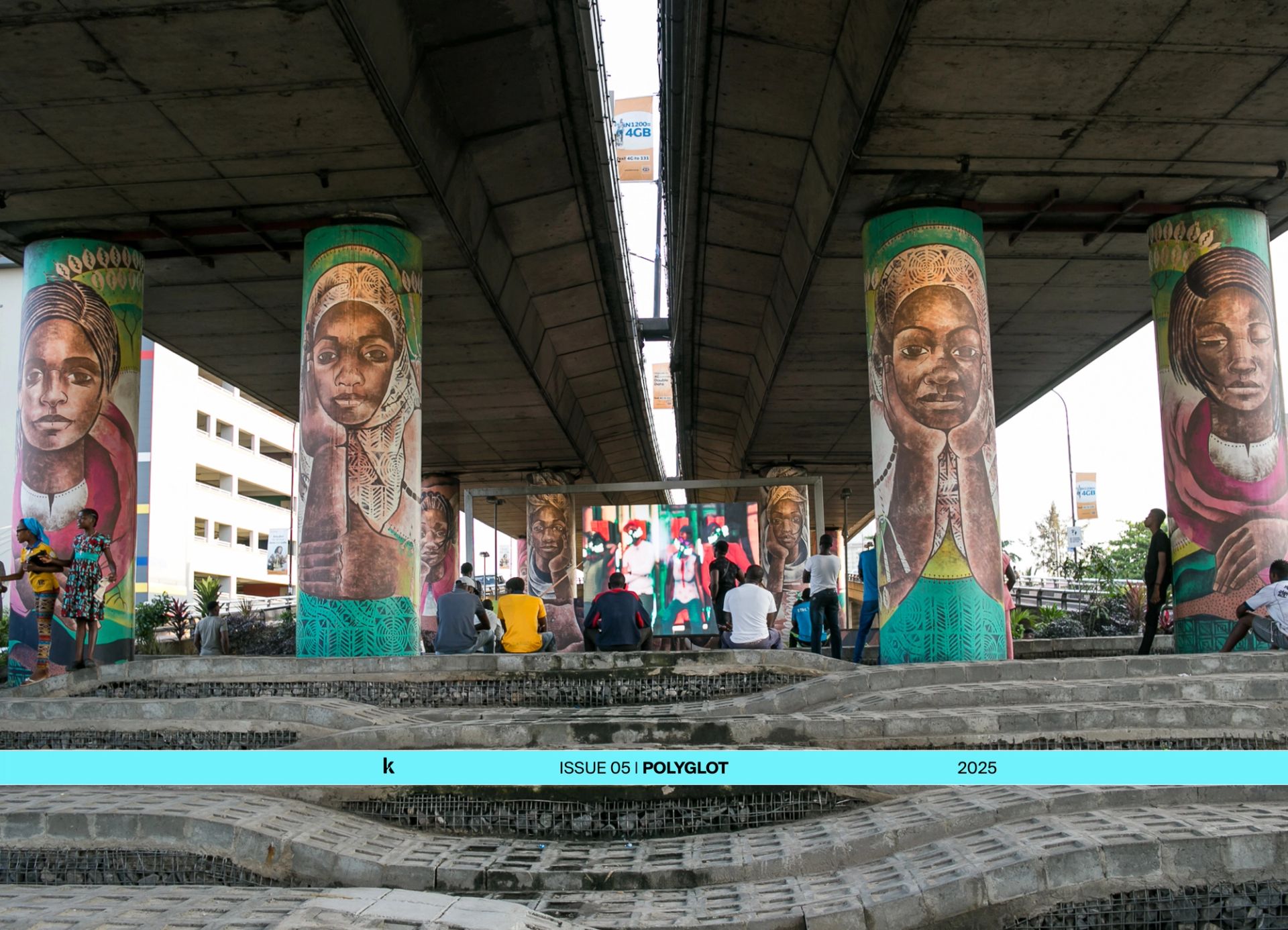This extract from the publication ‘The signs are collapsing and no longer certain’ (2025, Space Issues 9 Sandberg Instituut) by architect-trained artist, photographer and writer Juri Velt, explores the potential of language to shape our perception of changing landscapes through toponyms — the names given to those places defined by a specific characteristic.
This extract is part of KoozArch's issue "Polyglot".
On Toponyms
We call many places by name — cities, quarters, bridges, houses. Most of the time, you can read these names on maps and signs. We also often carry other place names on our tongues, ones not part of official records but engraved into a local language. Place names — also called toponyms — offer a way to refer to a graspable unit of space. And this space can be a city, or it can be a field you pass while riding your bike.
"Place names — also called toponyms — offer a way to refer to a graspable unit of space."
Giving parts of a landscape a name is a practice rooted in local knowledge produced by being with and working with(in) the landscape. The words a toponym consists of reflect the specific feature(s) that define the space itself — or defined it at the time the name was given. This feature can be visual: a type of soil and thus a specific vegetation, a body of water in an odd form, a rock formation looking like a figure, a building resembling a cooking utensil, a crooked crossing of streets. It can be a lone tree, a funny fountain, a radio tower.
Beyond describing what is visible, some toponyms refer to what happens in a landscape: an area of frequent avalanches, a cyclically flooded field, a route of a wildfire. Some toponyms might also refer to a type of ownership, a form of land reclamation, a strategy of deforestation, or similar specific practices—thus not predominantly reflecting the physical but rather the historical and social layers of a place. By further following the roots of a word to its origin, they can inform us how a landscape was seen, used, and understood at a specific time.
The Tales They Can Tell
Toponyms are a way how the landscape becomes language, and this language can translate a landscape back into our sensory understanding of the world. They inform us about what a place experienced — how it sounded, how it smelled, how moist, how dry, how exclusive, how busy it was. They tell a story, provoke an image, draw attention to a sensation. Their origin is sometimes hidden underneath layers of language, overgrown greenery, or dust. At times, it is less coded, and what the toponym tells of is still visible, sensible, or might become so through a slight shift in perspective or a little twist of tongue. Toponyms facilitate orientation and support navigation, not only for the initiated but often also for the ones observing. They make a landscape readable and offer connections to the knowledge written into it. And even if the meaning stays obscure, being able to call a place a name makes it part of one’s map. Toponyms make a landscape grow with their language — not in size, but in detail.
"Toponyms are a way how the landscape becomes language, and this language can translate a landscape back into our sensory understanding of the world."
This happens not only on a visual level but also by adding layers to the understanding of a place, its past and its possible futures. Toponyms also talk about (or even to) the present. What of its name-giving features is still present? What is sensible now? And what if the Lahnbach (stream of stone and slush) brings only crumbly dust?
Toponyms as Tools
Landscapes are dynamic, and so is language — some toponyms fade away, and others are introduced. Given our current challenges, one might question whether we have the language at hand to navigate the altered world ours is becoming. Amitav Ghosh, in Uncanny and Improbable Events (Penguin, 2021), argues that “lying at the heart of the climate crisis” is an “imaginative and cultural failure, […] coming in parts from the complexities of the technical language that serves as our primary window to climate change”. Facing the climate catastrophe and multiple other crises, our landscapes will soon look, behave, and consequently be used differently. Maybe then, toponyms disappear with their landscapes. Maybe they stay and remind us of things long gone. Maybe they will rapidly change, too. Maybe there already are contemporary toponyms to navigate a landscape of uncanny change.
"Given our current challenges, one might question whether we have the language at hand to navigate the altered world ours is becoming."
A Landscape, Not a Blandscape
A landscape is never a given thing; our perception of it depends on many factors. Toponyms tell of the relationships that are made with a landscape — they show what is considered urgent or important, what is ‘worth a name.’ Naming places helps avoid them slipping off into abstract space — to become a ‘blandscape’, a term coined (amongst others) by Robert Macfarlane to describe a landscape understood in large, generic units like field, valley, woods. In such a blandspace, features do not disappear but become unnamed and, through that, unseen. Language deficits lead to attention deficit, with the lack of an intimate connection and the lack of a specific language reinforcing each other. And if a landscape becomes undescribed and therefore unseen, it becomes more vulnerable to misuse, to exploitation, to being defined by its use value only.
If we understand language to have the power to situate us, to ground us where we are, then, by making us notice what is around us, toponyms situate us in a landscape and thus become an important tool to stay in (or regain a) close connection to changing landscapes. Bringing what is there into our sensorial system through our tongues allows us to attune to what is, and to talk about it, too. And then, the better you come to know a thing, the more you want to care for it. Language, and with it, toponyms, and its ability to notice, name, and situate, is a tool for caring and defending what is worth defending.
"Toponyms, and its ability to notice, name, and situate, is a tool for caring and defending what is worth defending."
Bio
Juri Velt studied photography at the Academy of Fine Arts Leipzig, and architecture at the Academy of Fine Arts Vienna. In 2023, they graduated from the Studio for Immediate Spaces, Sandberg Instituut, Gerrit Rietveld Academy, Amsterdam. They received the LINA Writing Award 2023 and published their book Tender and Toxic Tales with dpr Barcelona. Juri Velt is part of KlimaKultur Tirol, a platform that links art, culture and its production with climate protection and future issues through various formats. Their work has been shown in Schwaz, Innsbruck, Vienna, Leipzig, Amsterdam, Rotterdam, Oslo.





